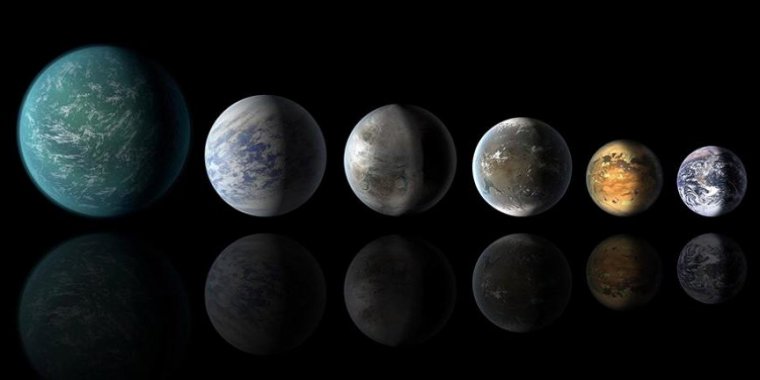| News / Space News |
Scientists have new tool to estimate how much water might be hidden beneath a planet’s surface
Scientists from the University of Cambridge now have a way to estimate how much water a rocky planet can store in its subterranean reservoirs. It is thought that this water, which is locked into the structure of minerals deep down, might help a planet recover from its initial fiery birth.

Scientists have new tool to estimate how much water might be hidden beneath a planet’s surface. Photo: NASA
The researchers developed a model that can predict the proportion of water-rich minerals inside a planet. These minerals act like a sponge, soaking up water which can later return to the surface and replenish oceans. Their results could help us understand how planets can become habitable following intense heat and radiation during their early years.
Planets orbiting M-type red dwarf stars — the most common star in the galaxy — are thought to be one of the best places to look for alien life. But these stars have particularly tempestuous adolescent years — releasing intense bursts of radiation that blast nearby planets and bake off their surface water.
Our Sun’s adolescent phase was relatively short, but red dwarf stars spend much longer in this angsty transitional period. As a result, the planets under their wing suffer a runaway greenhouse effect where their climate is thrown into chaos.
“We wanted to investigate whether these planets, after such a tumultuous upbringing, could rehabilitate themselves and go on to host surface water,” said lead author of the study, Claire Guimond, a PhD student in Cambridge’s Department of Earth Sciences.
The new research shows that interior water could be a viable way to replenish liquid surface water once a planet’s host star has matured and dimmed. This water would likely have been brought up by volcanoes and gradually released as steam into the atmosphere, together with other life-giving elements.
Their new model allows them to calculate a planet’s interior water capacity based on its size and the chemistry of its host star. “The model gives us an upper limit on how much water a planet could carry at depth, based on these minerals and their ability to take water into their structure,” said Guimond.
The researchers found that the size of a planet plays a key role in deciding how much water it can hold. That’s because a planet’s size determines the proportion of water-carrying minerals it is made of.
Most of a planet’s interior water is contained within a rocky layer known as the upper mantle — which lies directly below the crust. Here, pressure and temperature conditions are just right for the formation of green-blue minerals called wadsleyite and ringwoodite that can soak up water. This rocky layer is also within reach of volcanoes, which could bring water back to the surface through eruptions.
The new research showed that larger planets — around two to three times bigger than Earth — typically have drier rocky mantles because the water-rich upper mantle makes up a smaller proportion of their total mass.
The results could provide scientists with guidelines to aid their search for exoplanets that might host life, “This could help refine our triaging of which planets to study first,” said Oliver Shorttle, who is jointly affiliated with Cambridge’s Department of Earth Sciences and Institute of Astronomy.
“When we’re looking for the planets that can best hold water you probably do not want one significantly more massive or wildly smaller than Earth.”
The findings could also add to our understanding of how planets, including those closer to home like Venus, can transition from barren hellscapes to a blue marble.
Temperatures on the surface of Venus, which is of a similar size and bulk composition to Earth, hover around 450oC and its atmosphere is heavy with carbon dioxide and nitrogen. It remains an open question whether Venus hosted liquid water at its surface 4 billion years ago.
“If that’s the case, then Venus must have found a way to cool itself and regain surface water after being born around a fiery sun,” said Shorttle, “It’s possible that it tapped into its interior water in order to do this.” (University of Cambridge)
YOU MAY ALSO LIKE





